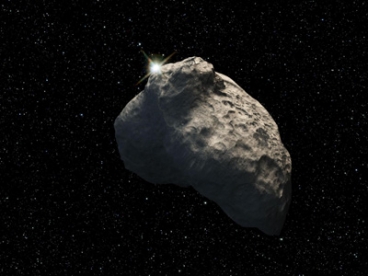Up for a challenge? Over the next two weekends, two asteroid occultations pass over North America. These are both occulting (passing in front of) +7th magnitude stars, easy targets for even binoculars or a small telescope. These events both have a probability score of 99-100%, meaning the paths are known to a high degree of accuracy. These are also two of the more high profile asteroid occultations for 2016.
Here’s the lowdown on both events:
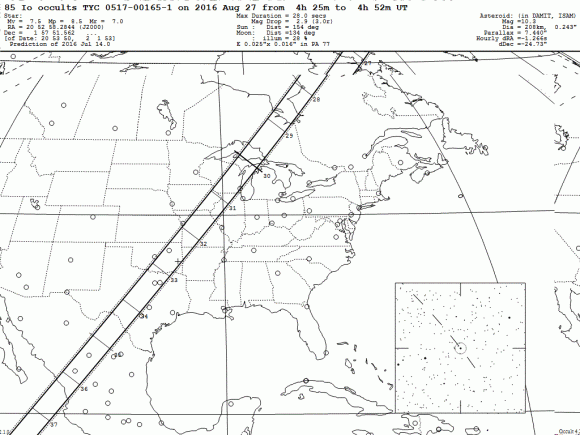
On the morning of Saturday, August 27th , the +10th magnitude asteroid 85 Io occults a +7.5 magnitude star (TYC 0517-00165-1). the maximum predicted duration for the event is 28 seconds, and the maximum predicted brightness drop is expected to be 3 magnitudes. The ‘shadow’ will cross North America from the northeast to the southwest starting over Quebec at 4:27 Universal Time (UT), crossing Ontario and Michigan’s upper peninsula at 4:30 UT, and heading south over Oklahoma, Texas, and Mexico at 4:36 UT. The action takes place in the constellation Aquarius, with the Moon at a 28% waning crescent.
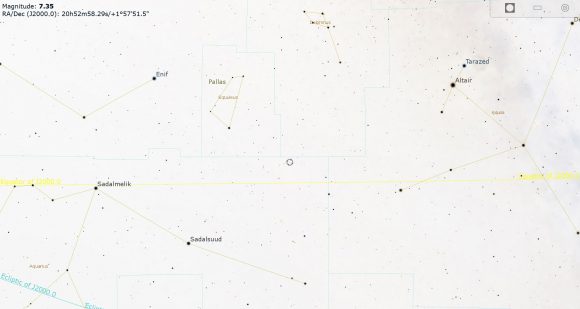
Discovered by C.H.F. Peters on September 19th, 1865, 85 Io is about 180 kilometers in diameter, as measured by an occultation in late 1995.

Next, on the morning of Saturday, September 3rd, the +11.5 magnitude asteroid 51 Nemausa occults a +7.6 mag star (HIP 8524). The maximum duration of the event along the centerline is expected to be 32 seconds in duration, with a maximum drop of four magnitudes. Said shadow will cross western Canada at9:42 UT, and the U.S. crossing runs from 9:49 to 9:55 UT. The action takes place in the constellation Pisces. The Moon phase is a slim 4% waxing crescent during the event.
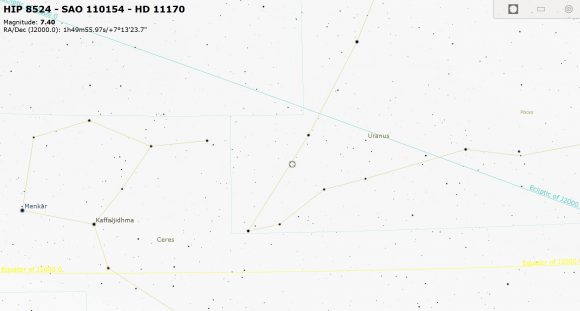
Discovered in 1858 by A. Laurent observing from Nîmes, France, 51 Nemausa occulted a bright star in 1979. In fact, there’s evidence from previous occultation to suggest the 51 Nemausa may possess a tiny moon… could it show up again during the September 3rd event?
Observing asteroid occultations is really a modern sub-specialty of amateur and even professional astronomy. To predict such an occurrence, the orbit of the asteroid or occulting body and the precise position of the star need to be known to a pretty high degree of precision. This required the advent of modern astrometry and massive computing power. If any casual sky observer noticed a naked eye star wink out way back when pre-mid 20th century, it’s lost to history.
The first successfully predicted and observed occultation of a star by an asteroid was the +8.2 magnitude star SAO 112328 by 3 Juno on February 19, 1958. Less than two dozen such events were observed right up through to 1980. Today, hundreds of such events are predicted worldwide each year.
Next month’s expected data release from the ESA’s Gaia mission should refine our stellar position and parallax knowledge even further, and fine-tune predictions of future asteroid occultations.
And speaking of occultations, some great observations were made of the July 29th, 2016 lunar grazing occultation of Aldebaran across the United States. The Moon occults Aldebaran for every lunation in 2016 into 2017, and we get another shot favoring the southern U.S. in the daytime on August 25th.
Observing an asteroid occultation is a challenge, requiring an observer acquiring and monitoring the correct star at the precise time of the event. If possible (i.e. weather permitting) familiarize yourself with the star field a night or two prior to the event. I usually have a precise audio time signal such as WWV radio running in the background.
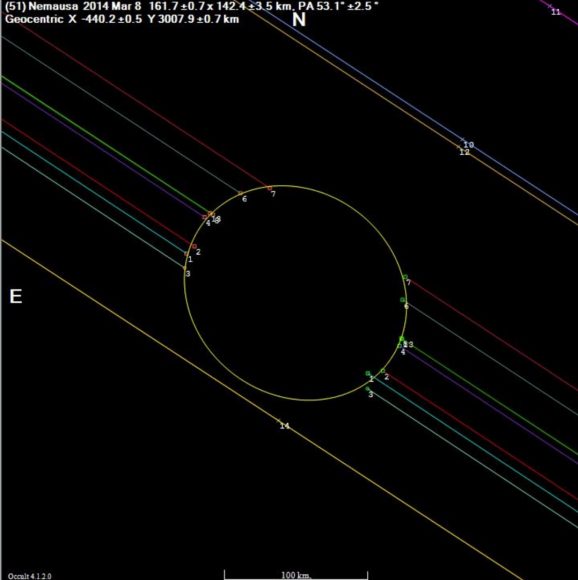
Why occultations? Well, if enough observations can be gathered, a sort of shadow profile of the occulting space rock can be made, with each observation representing a chord. Even negative ‘misses’ along the edge of the path help. Tiny moons of asteroids have even been discovered this way, as the distant star winks out multiple times.
The International Occultation Timing Association wants your observation. You can, with a little practice, make usable observations visually, though most observers tend to video record events.
Don’t miss these asteroid occultations and more, coming to a sky worldwide near you!

